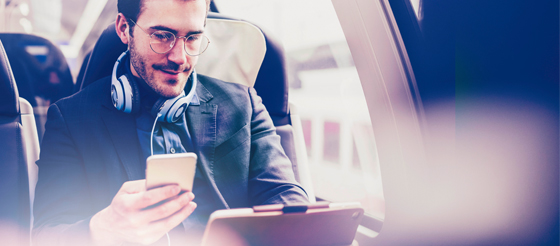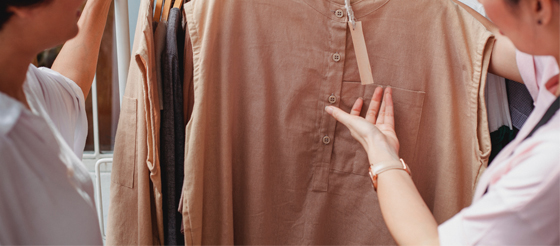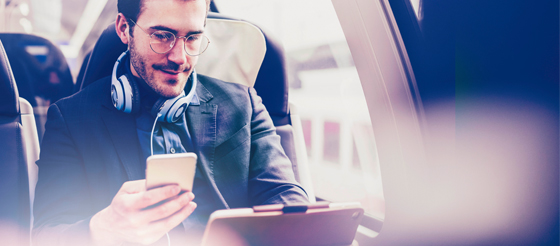While we may have wanted to start the year on a positive footing and ready for the new working year, the latest lockdown has made this a challenging time. For those able to work from home, it can be difficult to differentiate or define mentally and physically the difference between where you work and where you relax. With so many now having to face up to home schooling this adds a further layer of stress on an already tricky situation. But one consolation might be – we really are all in this together.
The New Year remains a good time to develop new positive habits and also recognise the bad habits you may have picked up. Let’s make the best of the situation and work from home productively while looking after our mental health.
Here we have outlined a few tips and tricks Gekko have used with our teams to manage and achieve the best work life balance with all our lives being within four walls.
Create a ‘home office’, however small
You may well have begun the first lockdown with a dedicated home office. Over time you may have witnessed ‘office creep’, increasingly working from the sofa or checking emails in bed. Have a renewed focus on creating a place you can separate from the rest of your home life. This will psychologically create an important distinction enabling you to switch between home working and home living. If you are able to use a separate room, close the door when the working day is over. This will help the active brain switch off from the thoughts of the working day.
However many don’t have the option of a dedicated working space but we can still apply the same methodology. Make sure you switch off the laptop, ipad or work phone and put them in a cupboard or drawer. Having a laptop out of sight will help put it out of mind meaning you can enjoy your evenings without being distracted. Make sure you do it every day to embed this as a habit. This will be your own version of leaving the office at the end of the working day – without the commute to have to contend with.
Support your posture, your lap shouldn’t be your desk
Working from home means it is all too easy to have no barrier between work and playtime. The ‘soft office’ is a phenomena that has developed throughout the country with a couch replacing your chair and your lap becoming your desk. This of course is bad for your posture. Look to find a more sturdy working space one that may emulate your office set up and ensure you have a chair that supports your back properly. One great tool is Upright Go, which can track and train your posture. This app also provides a visual representation of how you look when you are working. This can be eye opening.
One option is a Standing Desk for your Laptop. These are adjustable to suit any height and will bring your laptop to eye level, which is also perfect to present and work at.
For those using a monitor rather than a laptop screen there are great affordable options for a home office out there. Many brands have a range of different size monitors at reasonable price points to suit any task and will help you to lean into your laptop screen less.
Have a test week to monitor your productivity
You may have put boundaries in place when you first started working from home but over time they may have disappeared. These might be languishing alongside those plans to learn a new language or play an instrument. If they have, take some time to figure out out how you feel most comfortable and the ways you work which make you most productive. You might even start off with a test week where you assess your productivity and how long you are spending on different tasks.
One great exercise is monitoring how long tasks take. You can use a laundry cycle to monitor how long you have focused on one piece of work. Activity trackers like Rescue Time or Clockify are great for showing exactly where your time goes. You can even get Alexa or Google assistant involved. Set timers to get them to remind you to move onto another task or manage your workflow throughout the day.
Don’t skimp on breaks – schedule them in
If you have been working from home for a while it is easy to forget what a usual day in the office looks like. In some ways it is harder to take a break without the natural conversations with colleagues etc to break up the day. The day marches on without notice meaning lunch is grabbed on the hoof between calls. Also it is also possible not to see any daylight, particularly in winter months. This can all serve to burn you out, meaning you become less productive.
Combat this by planning your days in the morning. Add in breaks where you may have had them when working in the office. Your Fitbit should come in handy for this. You will be able to set reminders to take a break and track your steps. If you don’t make your 10,000 steps during the day it is the perfect excuse to get back out once the working day ends. One technique to look at is The Pomodoro Technique. This technique uses a timer to break down work into intervals, traditionally 25 minutes in length, separated by a short break. This can help you reset your mood for five minutes with some soothing music or a set time to grab a cuppa or fill up your water bottle.
Boost your mood and steps with on the go meetings
Working from home can certainly feel isolating, particularly for those used to an office environment. However remember your other colleagues will likely feel the same. Schedule times for an all team video call or even walking meetings to catch-up. You can increase your steps and even set team challenges.
If you know you do not need to be in front of a screen for a meeting why not use it as a chance for some exercise? It can be a real win/win. Grab your trainers and ear buds and go somewhere quiet while participating in the meeting. Just make sure it is somewhere you can get good reception and limited background noise, just hit mute when you’re not talking and remember to unmute when it’s your turn.
Working from home may have its positives but it’s not always easy. Remember to not be too hard on yourself while adapting to changes you can’t control. The great thing about lockdown is it creates an opportunity to work ‘your way’, whether listening to your music or taking breaks when you want. Make the best of the situation to embed some positive new habits while working from home, even one change will make a difference.
To read the full article please visit Bdaily.





